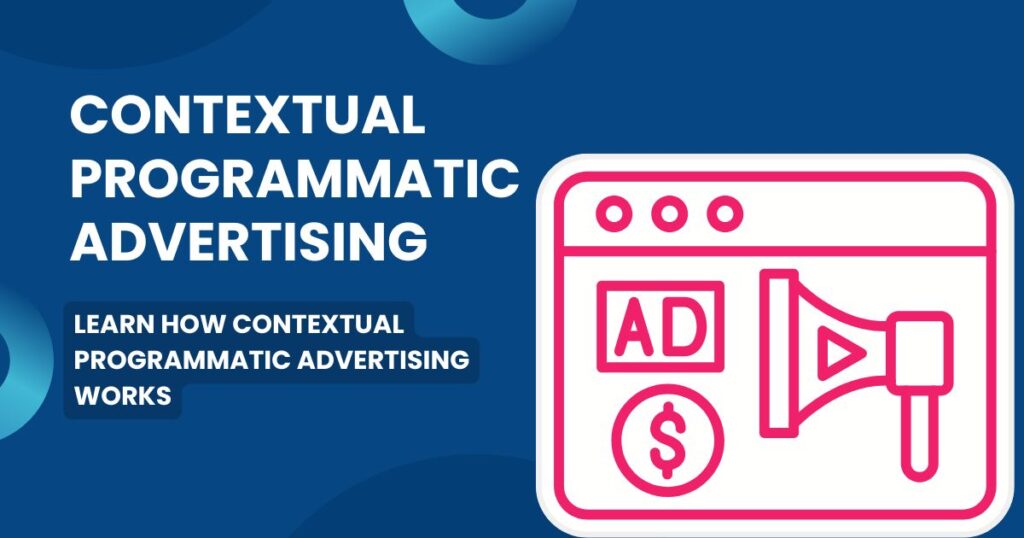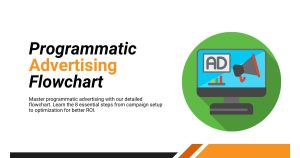The Rise of Contextual Programmatic Advertising

Targeted ads have become a part and parcel of digital marketing strategy. One highlighted trend is that methods such as programmatic contextual advertising, although subject to privacy interests, can still prove most standard. Unlike traditional behaviour targeting or ad performance tracking, which watches users’ online behaviours, contextual ad serves based on the content of users are actually consuming. In a world increasingly preoccupied with data protection and user privacy, businesses are now resorting to this approach.
What Is Contextual Programmatic Advertising?
Contextual programmatic advertising is a type of digital advertising that places ads within relevant content using programmatic, automated technology. Instead of relying on cookies or personal data, this approach analyzes the context of a webpage, such as keywords, topics, or sentiment, to determine which ads are the most relevant.
For example:
- Webpage Content: An article about plant-based diets.
- Contextual Ad: An ad for vegan protein powder or plant-based cooking classes.
Contextual advertising has been around for a while, but programmatic technology adds a layer of automation and precision. Ad placements are decided in real-time auctions, ensuring brands achieve maximum relevance and cost-efficiency.
How Does Contextual Programmatic Advertising Work?
Unlike behavioral targeting, which tracks users’ previous actions, contextual advertising focuses entirely on the here and now. Here’s how it functions at a technical level:
- Content Analysis: AI-powered algorithms scan the webpage or app, identifying primary topics, keywords, and the page’s overall tone (positive, neutral, or negative).
- Matching Ads to Content: Based on the content analysis, the programmatic platform matches the ad inventory to the most suitable advertising content.
- Real-Time Ad Placement: Through real-time bidding (RTB), advertisers compete for ad placement within milliseconds.
- Optimization: Advanced machine learning allows the system to optimize ad placement by continuously gathering performance data.
For instance, if a user visits a webpage about “Best DSLR Cameras for Beginners,” the AI might decipher specific keywords (“camera,” “photography gear,” “beginner”) and show them an ad for affordable camera accessories.
This method ensures relevance, reduces wasted ad spend, and respects user privacy by avoiding invasive tracking methods.
Why Contextual Programmatic Advertising Matters Now More Than Ever
1. The Rise of Privacy Awareness
With increasing scrutiny on data privacy and regulations like GDPR and CCPA, traditional behavioral tracking methods face challenges. Consumers are also growing more aware of how their data is being used, fueling demand for less-intrusive advertising approaches. Contextual targeting eliminates the need for tracking cookies, allowing brands to align with privacy-first marketing.
2. Relevance Without Intrusion
Contextual programmatic advertising provides personalization without the “creepy” factor associated with behavioral targeting. By focusing on content instead of user behavior, brands can deliver ads that feel natural and relevant in real time.
3. Improved User Experience
Ads placed based on content context often feel more organic and less disruptive. Unlike retargeted ads that follow users across platforms, contextual ads align seamlessly with the subject matter at hand.
4. Higher Conversion Rates
Since ads are tied closely to the context that users are engaging with, they’re more likely to reach attentive audiences. This relevance often results in better click-through and conversion rates compared to generic or poorly targeted ads.
5. Accuracy Through AI
Modern programmatic platforms are equipped with sophisticated AI algorithms that can understand nuance, tone, and multi-language content, enabling precise contextual targeting at scale.
6. Cost-Efficiency
Removing the complexities of behavioral tracking reduces costs and streamlines the advertising-buying process. This makes contextual advertising especially valuable for brands operating on a budget.
Practical Applications for Contextual Programmatic Advertising
1. E-commerce
Picture a user reading a blog on “The Best Gadgets of 2024.” The webpage could feature ads from your e-commerce store showcasing some of the exact gadgets mentioned in the article. This strategy seamlessly blends content engagement with shopping opportunities.
2. Travel and Hospitality
Contextual ads can target users viewing content related to vacations or flights. For instance, an article about “Top 10 Beaches in the Caribbean” could feature ads for flights, hotels, or travel packages to those locations.
3. Sports and Entertainment
Ads for fitness gear, smartwatches, or game-day snacks would fit naturally into news articles or blogs focused on sports events.
4. Health and Wellness
A video tutorial about “At-Home Yoga for Beginners” could feature ads for yoga mats, apparel, or fitness subscription apps.
5. Finance and Investment
Imagine someone reading an article titled “How to Build Wealth in Your 30s.” Contextual ads here could promote investment platforms, financial planning services, or eBooks on wealth management.
Expert Tips for Using Contextual Programmatic Advertising Effectively
1. Choose the Right Platform
Select a programmatic ad platform that excels in contextual capabilities. Leading platforms like Google Ads, The Trade Desk, and MediaMath offer tools for implementing and optimizing contextual campaigns.
2. Refine Your Keywords
Work closely with an SEO specialist to identify high-performing, relevant keywords. Granular keyword selection can dramatically improve contextual targeting and ad performance.
3. Monitor and Optimize Campaigns
Leverage real-time analytics to track the performance of your contextual ads. Identify which contexts, placements, or creatives drive the most engagements and refine your strategy accordingly.
4. Create Engaging Ad Content
Even with precise targeting, an ad must be visually and emotionally compelling to engage viewers. Use clear, concise copy, eye-catching visuals, and strong calls to action.
5. Test Different Contexts
Experiment with running campaigns across various contexts to understand which content environments yield the highest engagement.
6. Integrate Multi-Device Targeting
Ensure that your contextual ads effectively target multiple devices, including desktop, mobile, and tablet, to reach users wherever they are.
Future Trends in Contextual Advertising
1. AI-Powered Sentiment Analysis
Algorithms are becoming capable of assessing the sentiment of content. This will allow brands to avoid placements in negative contexts, ensuring their message always aligns with the right tone.
2. Video Content Contextual Targeting
Video content is growing exponentially, and targeting ads based on the context of videos will become increasingly relevant.
3. Voice Search Integration
With the rise of smart home devices and voice assistants, contextual advertising platforms may soon target voice search-based queries, opening new ways to deliver relevant ads.
4. Interactive Contextual Ads
Expect to see growth in interactive advertising formats designed to blend with content environments. Think 3D ads, gamified elements, or shoppable in-content features.
5. Contextual Targeting in the Metaverse
With the expanding virtual worlds of the metaverse, new opportunities for contextual targeting will emerge as users interact with digital spaces on a whole new level.
Transform Your Advertising Strategy
Programmatic advertising in context is bringing a new wave of privacy-focused, impact marketing. Its power to link brands and users through sporting content without accessing individual data gives 2024 and marketers a strong weapon.
Do you want to get ahead of the pack? Use tools now that let you perform creative contextual advertising. By adjusting your ads to the intention of users, you are not just promoting positive performance but also cultivating trust and credibility with the audience.





